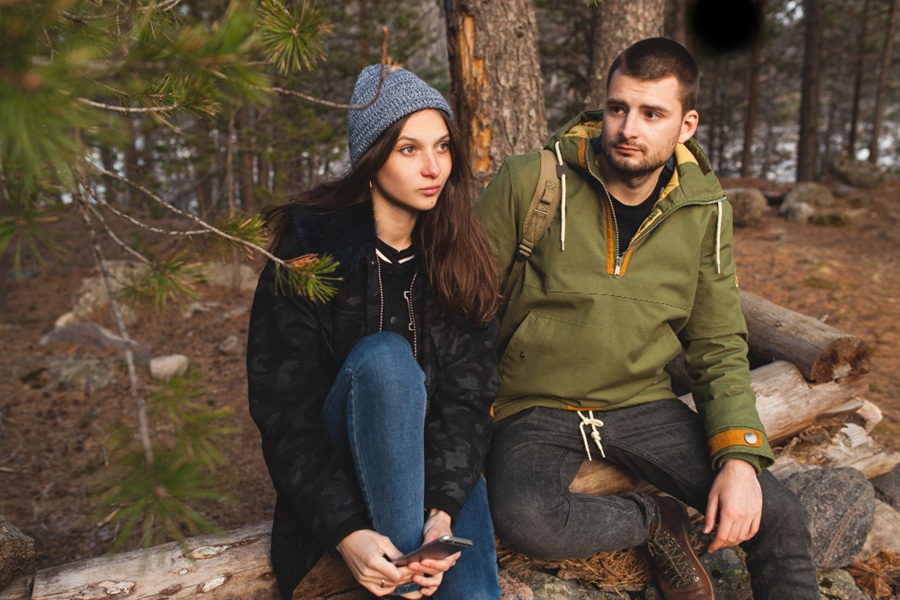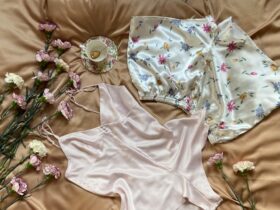How do you plan to remain comfortable throughout your outdoor adventures regardless of weather conditions?
Wearing inappropriate clothing is the quickest way to spoil any outdoor activity. The right clothing choices determine your level of comfort during outdoor activities in both summer heat and winter cold.
The good news?
Selecting suitable outdoor clothing is not difficult. Basic knowledge combined with smart shopping lets you put together a versatile wardrobe that protects you in each season.
Inside Your Guide:
- Understanding Seasonal Apparel Needs
- Essential Layers for Year-Round Adventures
- Summer & Winter Gear Essentials
- Spring and Fall: Mastering the Transition Seasons
- Materials Matter: Natural vs. Synthetic Fabrics
- Budget-Friendly Gear Tips
Understanding Seasonal Apparel Needs
Outdoor gear serves functional purposes by offering protection against different weather conditions instead of being merely fashionable items.
Each season presents unique challenges:
- Summer: Heat regulation, sun protection, breathability
- Winter: Insulation, moisture management, wind resistance
- Spring/Fall: Adaptability, layering options, rain protection
The mistake most beginners make? Outdoor enthusiasts often purchase generic “outdoor clothes” without accounting for the seasonal demands and specific activities they will encounter.
Here’s the thing…
The type of clothing necessary for your activities will change significantly based on the adventure you select. The gear needed to hike across hot desert trails is completely different from what you need for snowshoeing in powder snow. A visit to a sporting goods store Phoenix offers personalized advice to match your specific outdoor activities.
Market research estimates the global outdoor apparel market will expand by USD 7.3 billion between 2025 and 2029 with a compound annual growth rate of 6.4%. Advances in fabric technology combined with growing consumer interest for sustainable outdoor clothing are driving market growth.
Essential Layers for Year-Round Adventures
The key to staying comfortable outdoors? **Layers. **
The ability to understand the layering system makes it your secret weapon throughout all seasons.
- Base Layer: Sits against your skin, wicks moisture
- Mid Layer: Provides insulation, traps body heat
- Outer Layer: Shields from wind, rain, and snow
The functionality of this system derives from its ability to form microenvironments that can be adjusted around your body. Too warm? Remove a layer. Getting chilly? Add one back.
But here’s what most people don’t realize…
Your layering system functions effectively only when each piece maintains high-quality materials. Your whole layering system fails when the base layer traps sweat even if the outer shell costs a lot.
Summer & Winter Gear Essentials
Summer Priorities:
- UPF-rated fabrics provide protection from harmful UV radiation.
- Ventilation: Strategic mesh panels promote airflow
- Moisture management: Quick-drying fabrics keep you comfortable
Don’t make this common mistake…
Hikers during summer months often choose cotton t-shirts because they believe cotton helps maintain coolness. During extended hikes cotton clothing absorbs sweat causing weight gain which leads to skin irritation and potential heat-related medical conditions.
Industry data demonstrates an increasing demand for sun protection clothing that provides UV protection alongside moisture-wicking capabilities.
Winter Necessities:
- Insulated layers made from down or synthetic materials retain body warmth.
- A waterproof shell functions by blocking rain while simultaneously allowing sweat vapors to evaporate.
- Quality gloves together with hats and warm socks serve as essential protection for extremities.
The biggest winter mistake I see? Consumers spend too much money on luxurious outerwear but neglect to purchase good base layers. Your moisture-wicking base layer serves as the primary barrier to combat cold weather.
The market research reveals topwear and bottomwear as the fastest expanding apparel categories because of the growing demand for flexible clothing options suitable for different seasonal conditions.
Spring and Fall: Mastering the Transition Seasons
Spring and fall seasons bring their own difficulties through their unpredictable weather patterns and temperature fluctuations which lead to mixed conditions.
These transition seasons demand:
- Convertible pieces: Zip-off pants, roll-up sleeves
- Packable layers: Easily stowed when not needed
- Protection against light precipitation that offers lighter weight than waterproof materials for moderate rain conditions
Here’s what trips up most outdoor enthusiasts…
Outdoor consumers spend large amounts of money on summer and winter clothing but often overlook high-quality transitional season apparel. Proper equipment allows spring and fall to become the seasons for your most comfortable adventures.
The outdoor industry has recognized this gap. Outdoor lifestyle clothing which combines practical features and fashion appeal is gaining popularity for uses outside of conventional sports.
Materials Matter: Natural vs. Synthetic Fabrics
Outdoor enthusiasts continue to argue about fabric choices between natural and synthetic materials.
Natural fibers (wool, cotton, down):
- Wool regulates temperature exceptionally well
- Cotton provides comfort but its moisture retention makes it unsuitable for most physical activities.
- Down provides unmatched warmth-to-weight for dry conditions
Synthetic materials (polyester, nylon, synthetic fill):
- Dry faster than natural fibers
- Often more durable and abrasion-resistant
- Maintain insulating properties when wet
The truth? A mixed approach usually works best.
Market research shows that the use of sustainable materials such as recycled polyester, organic cotton, and hemp continues to grow. Outdoor enthusiasts who make smart choices select materials based on the specific outdoor activities they engage in.
Sustainability in Outdoor Apparel
The outdoor industry experiences significant changes as it moves towards sustainable practices.
New consumer research reveals that 81% of shoppers believe companies should take active steps to enhance environmental conditions. Outdoor apparel manufacturers are rapidly moving towards PFAS-free and carbon-neutral clothing products.
The new Foray/Aspire 3-layer jacket by Outdoor Research stands as the first technical rain jacket to achieve carbon neutral certification through its construction from 100% recycled materials.
The outdoor apparel market reached $35 billion in 2023 and is projected to expand to $62 billion by 2032 at a 6.6% CAGR.
Budget-Friendly Gear Tips
Outdoor apparel with top quality comes with high costs yet you can assemble your collection in financially savvy ways.
My top money-saving strategies:
- Purchase winter gear during spring sales when prices drop and buy summer gear in fall when it goes on clearance.
- Choose items that serve multiple seasons to maximize your investment value.
- When building your wardrobe start with quality base layers and outer shells.
- You can choose last year’s models because performance differences between them and newer versions tend to be negligible.
Here’s something many outdoor enthusiasts overlook…
More expensive products may not necessarily meet your requirements better than their less costly alternatives. Mid-range gear delivers the best combination of performance and value.
The Adventure Awaits: Final Thoughts
Outdoor apparel selection should prioritize both safety and experience enhancement beyond just comfort considerations.
Let’s recap the key points:
- Layer strategically for maximum adaptability
- Choose appropriate materials for your specific activities
- Consider sustainability when making purchases
The outdoor apparel market experiences swift evolution as technological advancements create gear that surpasses previous standards in functionality and sustainability. Market projections show that the outdoor apparel industry will expand its worth from $35B in 2023 to $62B by 2032.
Don’t let sub-par gear limit your adventures. Selecting proper clothing allows you to experience outdoor activities safely and comfortably throughout all seasons.
What seasonal adventure will you tackle next?








Leave a Reply